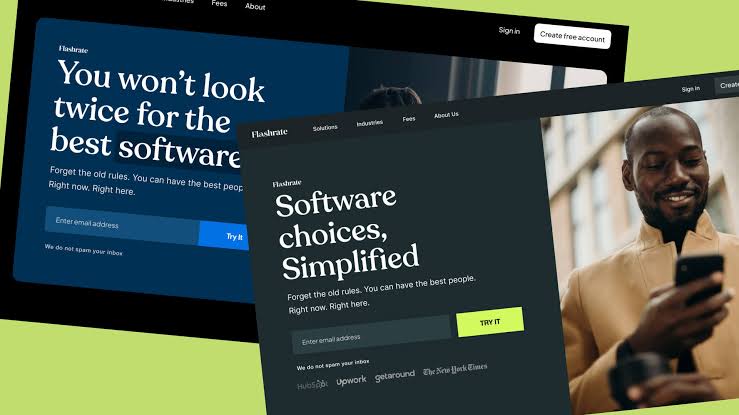Creating effective landing pages is essential for driving conversions. Start by defining your goals and crafting compelling headlines. Design a clean, engaging layout with relevant images, persuasive copy, and a clear call-to-action. Optimize forms, incorporate trust signals, and use A/B testing to refine your page. Analyze performance metrics to ensure your landing page effectively converts visitors into leads or customers.
Crafting compelling landing pages is essential, for turning visitors into potential customers. A well designed landing page grabs visitors attention encourages them to take specific actions and ultimately transforms them into leads or customers. Achieving this requires a blend of planning, design and testing. Below is a detailed overview of creating landing pages that boost conversions.
Understanding Your Goal
To build a landing page it's crucial to establish its purpose right from the start. This purpose should be in line with your broader marketing approach and may involve tasks such as collecting email addresses, boosting sales or promoting registrations for a webinar. Having a clear understanding of your goal will influence how you design and structure the landing page content. For instance if your objective is to generate leads the landing page should prioritize prompting visitors to share their details in return for a valuable offer.
Crafting a Compelling Headline
The headline on your landing page plays a role, in capturing the visitors interest and communicating the value of your offering. An effective headline should be straightforward, brief and in line with what the visitor expects. It should speak to the challenges or aspirations of your audience and present a solution. For example if you're providing a free eBook the headline should emphasize the eBooks key advantage and encourage visitors to explore more.
Designing an Engaging Layout
The effectiveness of your landing page is greatly influenced by its design. An attractive and organized layout directs visitors focus and simplifies page navigation. Prioritize key elements like the headline, call to action (CTA) and form in your layout. Steer clear of clutter and distractions that could divert visitors from the purpose of the page.
Choosing the Right Images and Media
To improve user experience your landing page should feature images and media that complement the content. Using quality visuals related to your offering can build credibility and make the page more captivating. For instance when showcasing a product incorporating images or videos of it in action can help users understand its advantages. However it's important to strike a balance and avoid overwhelming the page with media, as it may lead to loading times and a diminished user experience.
Writing Persuasive Copy
To effectively persuade visitors on your landing page use persuasive copy that encourages them to take action. Opt for language that showcases the advantages of your offer and addresses any concerns they may have. Divide the content into sections with subheadings for readability. Bullet points can be useful for outlining features or benefits. Ensure that the text aligns with the headline and overall theme of the page.
Creating an Effective Call-to-Action
The call to action (CTA) plays a role, in your landing page. It needs to be positioned and convey what you want visitors to do next. The CTA should be specific, focused on action and persuasive. Use language that motivates visitors to click. For example instead of a CTA like "Submit," opt for something more captivating such as "Claim Your Free Trial" or "Download Today." Make sure the CTA button is visually different and catches attention on the page.
Optimizing the Form
To boost conversions if your landing page has a form make sure its optimized. Keep the form brief while still gathering the details you require. Lengthy forms can be off putting and result in rates. Think about using profiling to gather information gradually instead of in one go. Ensure the form is user friendly with instructions. Also provide assurance to visitors about the confidentiality of their information to establish trust.
Incorporating Trust Signals
Trust signals are features that establish trustworthiness and give assurance to visitors about the authenticity of your proposal. These elements may consist of feedback from customers, ratings, success stories and symbols of trust. Showcasing testimonials from customers can enhance trust and credibility. If relevant include examples or success narratives that showcase the benefits of your offering. Trust symbols like seals or industry certifications can also ease worries regarding the security of sharing information.
Testing and Optimizing
Designing a landing page is a process that requires continuous testing and refinement. Employ A/B testing to evaluate variations of your landing page and discover which components yield results. Experiment with different headlines, visuals, calls to action and form layouts to determine what appeals to your target audience. Assess the outcomes to pinpoint areas for enhancement and make informed choices based on data to improve the effectiveness of your landing page.
Analyzing Performance Metrics
To evaluate how well your landing page is performing keep an eye on metrics like conversion rate, bounce rate and time spent on the page. The conversion rate shows what percentage of visitors take the action you want them to while the bounce rate tells you how many users leave without interacting. Time spent on the page can give you an idea of how captivating and relevant your content is. Use these metrics to determine the effectiveness of your landing page and make adjustments, as needed.
By implementing these strategies you can design landing pages that are not visually appealing but also highly effective in driving conversions. Understanding your objectives creating content and consistently testing and refining your approach will help you build landing pages that captivate visitors and prompt them to take action.
